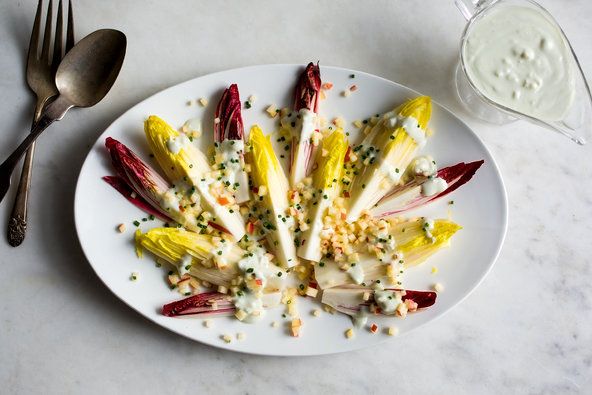November 8, 2014 archive
Nov 08 2014
Cartnoon
Nov 08 2014
On This Day In History November 8
This is your morning Open Thread. Pour your favorite beverage and review the past and comment on the future.
Find the past “On This Day in History” here.
November 8 is the 312th day of the year (313th in leap years) in the Gregorian calendar. There are 53 days remaining until the end of the year.
On this day in 1793 the Louvre opens as a public museum. After more than two centuries as a royal palace, the Louvre is opened as a public museum in Paris by the French revolutionary government. Today, the Louvre’s collection is one of the richest in the world, with artwork and artifacts representative of 11,000 years of human civilization and culture.
The Musée du Louvre or officially Grand Louvre – in English the Louvre Museum or simply the Louvre – is one of the world’s largest museums, the most visited art museum in the world and a historic monument. It is a central landmark of Paris and located on the Right Bank of the Seine in the 1st arrondissement (district). Nearly 35,000 objects from prehistory to the 19th century are exhibited over an area of 60,600 square metres (652,300 square feet).
The museum is housed in the Louvre Palace (Palais du Louvre) which began as a fortress built in the late 12th century under Philip II. Remnants of the fortress are still visible. The building was extended many times to form the present Louvre Palace. In 1682, Louis XIV chose the Palace of Versailles for his household, leaving the Louvre primarily as a place to display the royal collection, including, from 1692, a collection of antique sculpture. In 1692, the building was occupied by the Académie des Inscriptions et Belles Lettres and the Académie Royale de Peinture et de Sculpture, which in 1699 held the first of a series of salons. The Académie
remained at the Louvre for 100 years. During the French Revolution, the National Assembly decreed that the Louvre should be used as a museum, to display the nation’s masterpieces.The museum opened on 10 August 1793 with an exhibition of 537 paintings, the majority of the works being confiscated church and royal property. Because of structural problems with the building, the museum was closed in 1796 until 1801. The size of the collection increased under Napoleon when the museum was renamed the Musée Napoleon. After his defeat at Waterloo, many works seized by Napoleon’s armies were returned to their original owners. The collection was further increased during the reigns of Louis XVIII and Charles X, and during the Second French Empire the museum gained 20,000 pieces. Holdings have grown steadily through donations and gifts since the Third Republic, except during the two World Wars. As of 2008, the collection is divided among eight curatorial departments: Egyptian Antiquities; Near Eastern Antiquities; Greek, Etruscan, and Roman Antiquities; Islamic Art; Sculpture; Decorative Arts; Paintings; Prints and Drawings.
Nov 08 2014
The Breakfast Club (Better Than Mozart?)
 Jakob Ludwig Felix Mendelssohn Bartholdy, the very name tells a story of the pervasive anti-Semitism in pre-World War II Europe.
Jakob Ludwig Felix Mendelssohn Bartholdy, the very name tells a story of the pervasive anti-Semitism in pre-World War II Europe.
Mendelssohn’s Grandfather was the noted Jewish philosopher Moses and his Father Abraham a banker who was instrumental in breaking Napoleon’s Continental System which may explain Felix’s positive reception by the British. Abraham was not very happy being a Jew, especially a notorious one, and declined to have Felix and his brother Paul circumcised.
After moving the family to Berlin from Hamburg in 1811, Abraham had Felix baptized in the Reformed Church where he acquired his Christian name- Jakob Ludwig. Abraham himself renounced the name Mendelssohn and adopted the name Bartholdy from his wife’s family which itself had taken it from the name of some property in Luisenstadt that they owned.
Talk about your Oedipal issues-
Abraham later explained this decision in a letter to Felix as a means of showing a decisive break with the traditions of his father Moses: “There can no more be a Christian Mendelssohn than there can be a Jewish Confucius“
Dysfunctional? Hmm…
Felix’s sister Fanny was much more talented that he was but she was a girl so, you know, couldn’t actually do anything being property and all. She hated the name and wrote him in 1829, “Bartholdy […] this name that we all dislike”. Felix himself compromised and styled himself Mendelssohn Bartholdy out of deference to his Father.
Felix was restrained from displaying his musical talents at an early age by his Father (Hmm…) but they were apparent by the time he was 6. In 1819 he and Fanny were allowed to study with Carl Friedrich Zelter who ran the orchestra at the Sing-Akademie zu Berlin. They had an extensive collection of original J.S. Bach manuscripts and Felix became a big fan.
Zelter introduced Felix to his friend Wolfgang von Goethe in 1821.
von Goethe: Musical prodigies … are probably no longer so rare; but what this little man can do in extemporizing and playing at sight borders the miraculous, and I could not have believed it possible at so early an age.
Zelter: And yet you heard Mozart in his seventh year at Frankfurt?
von Goethe: Yes … but what your pupil already accomplishes, bears the same relation to the Mozart of that time that the cultivated talk of a grown-up person bears to the prattle of a child.
I guess it was the incessant fart jokes.
Felix led a short and presumably deeply unhappy life (Father a control freak self hating Jew? Do the math.) passing at a young 38 from a series of strokes which his family was predisposed to. As for his religious views, it’s a matter of some dispute. He was a conforming member of the Church, yet commissioned a complete collection of the writings of his Grandfather Moses and once wrote his sister Rebecka regarding her complaints about an unpleasant relative-
What do you mean by saying you are not hostile to Jews? I hope this was a joke […] It is really sweet of you that you do not despise your family, isn’t it?
He may or may not have had an affair with Jenny Lind the Barnum Sideshow Freak and while he was acclaimed by his contemporaries for his virtuosity, he was also regarded as a completely conventional frump. He admired and patterned himself after Bach and his connection with the Romantic movement is that his compositions were designed to evoke emotion rather than as clever and catchy technical exercises.
Up until the acendancy of Hitler he was a respected, if minor, member of the German “Art” Music (I’m telling yah, boffo in Britain) Pantheon. And then-
Ironically today is the 91st anniversary of the Beer Hall Putsch.
Contemporary critics are back to the “well, he wasn’t revolutionary enough” stage which is an improvement I guess. I’d agree with Friedrich Nietzsche–
At any rate, the whole music of romanticism [e.g. Schumann and Wagner] … was second-rate music from the very start, and real musicians took little notice of it. Things were different with Felix Mendelssohn, that halcyon master who, thanks to his easier, purer, happier soul, was quickly honored and just as quickly forgotten, as a lovely incident in German music.
The reason “incident” is highlighted is some people think it’s condescending coming from Nietzsche. I don’t mean to imply anything by it at all even though I endorse the gestalt of the comment as a whole (did I mention I’m part German on my Mother’s side?)- Schumann is totally forgetable, Wagner an insane raving egomaniac.
While Mendelssohn is best known for the Wedding March I choose to present instead Symphony #2 in B-flat major, entitled Lobgesang (Hymn of Praise) which is notable for it’s inclusion of a chorus and was written to celebrate the 400th anniversary of the printing press.
Obligatories, News and Blogs below.
Nov 08 2014
Random Japan
Check out this absolutely stunning drone video of Nagasaki’s Battleship Island in Ultra HD
Audrey AkcasuNagasaki is known for having a lot of history, being the only port open to foreign trade during Japan’s long isolation in the Edo Period. But one of Nagasaki’s most captivating tourist attractions really isn’t that old – Hashima Island, better known as Gunkanjima, or Battleship Island. It’s eerie existence brings haikyo (urban ruins) fans from all over the world. If you can’t make it to the island yourself, or are unsatisfied with the limited visibility from the tour, wait no longer. Thanks to “Gunkanjima Archives,” an organization run by Nishi Nihon Newspaper, which is dedicated to bringing you photos and videos of the desolate island, you can now take an Ultra HD drone tour of the island in a spellbinding video.
Nov 08 2014
Health and Fitness News
 Welcome to the Health and Fitness News, a weekly diary which is cross-posted from The Stars Hollow Gazette. It is open for discussion about health related issues including diet, exercise, health and health care issues, as well as, tips on what you can do when there is a medical emergency. Also an opportunity to share and exchange your favorite healthy recipes.
Welcome to the Health and Fitness News, a weekly diary which is cross-posted from The Stars Hollow Gazette. It is open for discussion about health related issues including diet, exercise, health and health care issues, as well as, tips on what you can do when there is a medical emergency. Also an opportunity to share and exchange your favorite healthy recipes.
Questions are encouraged and I will answer to the best of my ability. If I can’t, I will try to steer you in the right direction. Naturally, I cannot give individual medical advice for personal health issues. I can give you information about medical conditions and the current treatments available.
You can now find past Health and Fitness News diaries here and on the right hand side of the Front Page.

Bitter greens taste bitter in part because of the presence of certain phytochemicals, which some studies have shown to have antioxidant attributes. We have always known that these greens are healthy and as scientists learn more about the compounds that contribute to their bitter flavors, we are beginning to understand why.
~Martha Rose Shulman~
This dish combines four elements, hot, sour, sweet and bitter, for a delicious result.
Wild Arugula, Celery and Apple Salad With Anchovy Dressing
A salad with a delicious play of bitter, pungent, sweet and salty flavors.
Endive Salad With Blue Cheese Dressing
A new, more flavorful twist on an American classic
Penne With Radicchio and Goat Cheese
Bitter greens combines with creamy goat cheese for an irresistible result.
Seared or Grilled Radicchio With Walnut Anchovy Sauce
A delicious blend of salty anchovies, pungent garlic and nutty walnuts makes the perfect sauce for seared or grilled radicchio.
Nov 08 2014
Transgender Awareness


It’s Transgender Awareness time. In some locations it’s the entire month of November. Some locales are celebrating for a week…generally around November 10-20…ending with Transgender Day of Remembrance on November 20 and/or Transgender Day of Celebration on November 21.
So I guess it is my job to help make you aware. 🙂
I’ve got some videos from the I Am project and some news bits which I hope fit that agenda.


